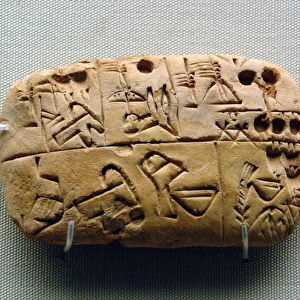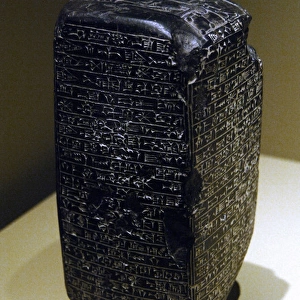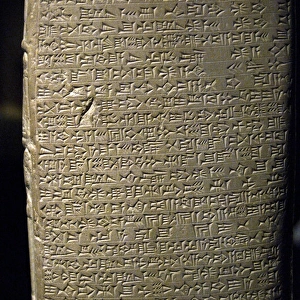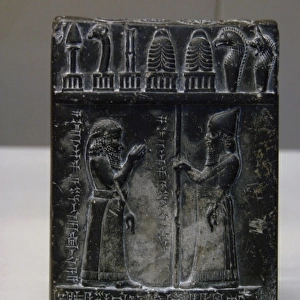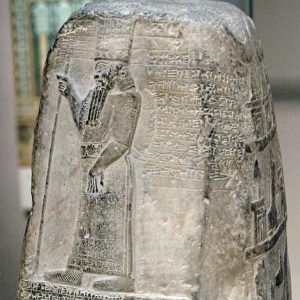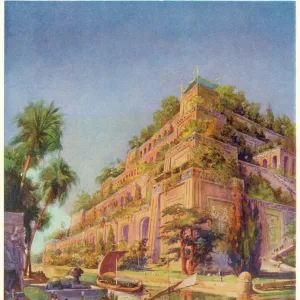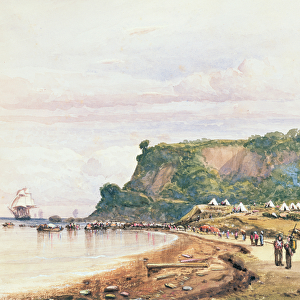Home > Europe > United Kingdom > England > London > Sights > British Museum
Mesopotamia. Clay foundation peg. 1st Dynasty of Lagash. 240
![]()

Wall Art and Photo Gifts from Mary Evans Picture Library
Mesopotamia. Clay foundation peg. 1st Dynasty of Lagash. 240
Mesopotamia. Clay foundation peg. 1st Dynasty of Lagash. 2400Bc. From Bad-Tibira. Iraq. British Museum. London. England. United Kingdom
Mary Evans Picture Library makes available wonderful images created for people to enjoy over the centuries
Media ID 14337748
© Thaliastock / Mary Evans
Antique Clay Clove Cuneiform Dynastic Dynasty Foundation Inscribed Inscription Iraq Lagash Mesopotamia Mesopotamian Nail Sumer Sumerian
FEATURES IN THESE COLLECTIONS
> Asia
> Iraq
> Related Images
> Europe
> United Kingdom
> England
> London
> Museums
> British Museum
> Europe
> United Kingdom
> England
> London
> Sights
> British Museum
EDITORS COMMENTS
This photograph showcases a clay foundation peg from the ancient city of Bad-Tibira, located in the Mesopotamian region of modern-day Iraq. Dating back to approximately 2400 BC, this artifact is a testament to the rich history and cultural significance of the 1st Dynasty of Lagash during the Early Dynastic Period. The 1st Dynasty of Lagash was a prominent political and cultural power in the Sumerian city-state of Lagash, which is now part of southern Iraq. This era is marked by the reign of several notable rulers, including the legendary King Entemena, who is renowned for his military conquests and architectural achievements. This particular clay foundation peg, which measures around 12 cm in length, was discovered at the archaeological site of Bad-Tibira. It features an intricately inscribed cuneiform text, which provides valuable insights into the administrative and historical records of the time. The text includes the name of the ruler who commissioned the construction project for which this peg was used, as well as the date and location of the project. The clay peg is a prime example of the advanced writing system and architectural techniques that were employed during the Sumerian civilization. The use of cuneiform inscriptions on foundation pegs was a common practice during the Early Dynastic Period, as it allowed for the recording and preservation of historical information. Today, this precious artifact is housed in the British Museum in London, England, where it continues to inspire awe and fascination among scholars, historians, and visitors alike. The British Museum's extensive collection of Mesopotamian artifacts is a testament to the enduring legacy of the ancient civilizations that once thrived in this region, and this clay foundation peg from the 1st Dynasty of Lagash is a noteworthy addition to that collection.
MADE IN AUSTRALIA
Safe Shipping with 30 Day Money Back Guarantee
FREE PERSONALISATION*
We are proud to offer a range of customisation features including Personalised Captions, Color Filters and Picture Zoom Tools
SECURE PAYMENTS
We happily accept a wide range of payment options so you can pay for the things you need in the way that is most convenient for you
* Options may vary by product and licensing agreement. Zoomed Pictures can be adjusted in the Cart.



